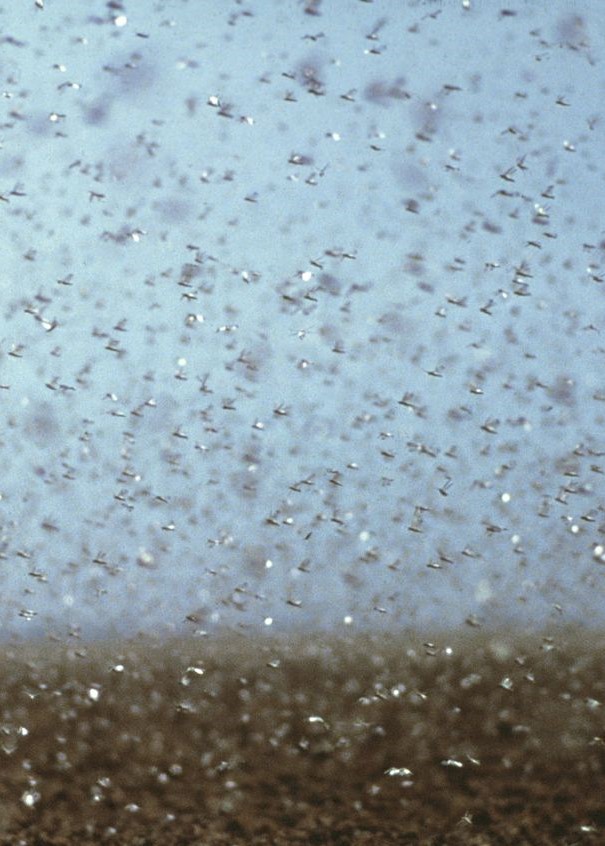DELHI, INDIA – Just when South Asia countries of Pakistan and India are contending with the complications of the COVID-19 virus, massive swarms of locusts have invaded. Over the span of the past three weeks, India has risen from the 15th most COVID cases to the 4th. Pakistan now occupies the 15th position.

The locust invasion compounds the threat to South Asia’s health and economic welfare. People have been dying from COVID-19 and from the inability to access food during the lockdowns. Many may die of starvation because they have no food, no income to purchase food, and no businesses open selling it. The charitable work of NGOs that have been delivering food has been their saving grace.
It is important to remember that the COVID pandemic has disrupted the South Asian economy as much as or more than it has here in America. The hardest-hit countries are suffering severe economic crises from which some may never recover. And that is what makes the locust infestation even more threatening.
The locusts won’t harm people directly. They are not known to be carriers of vector-borne diseases like malaria or dengue fever. But they have the potential to devastate vast, almost unimaginable, acres of agricultural crops. The locusts have already destroyed more than 123,000 acres of crops in India.
The locusts present South Asia with a complex problem, so much so that Pakistan has already declared a national emergency.
- The mass destruction of fruit and vegetable crops will further diminish access to food for the masses who desperately need to be fed.
- The crop destruction will further increase the economic stress as cash crops vanish, whether those crops are food or commodities like cotton.
- The COVID lockdowns have adversely impacted the ability to mobilize the resources necessary to stave off the locust hordes.
- The locusts are breeding. “Reinforcements” in the form of new locusts will arrive within weeks.
Media outlets unanimously describe the locust invasion as the worst in several decades.
The Indian states of Madhya Pradesh, Uttar Pradesh, Gujarat, Rajasthan, and Maharashtra face the potential of being the hardest-hit in this first wave of locusts. These states provide nearly 40% of India’s agricultural production, equivalent to approximately 80 million tons.
Portions of Pakistan’s cotton crop have already been consumed. This will affect the country’s dominant textile industry with wage earners losing jobs, disrupting the supply chain from farm to market, and inflated pricing of finished goods as a result of short supply.
Even India’s northern cities are being enveloped by millions of locusts.
The Guardian explained that “India’s agriculture ministry is hoping to control the invasion before monsoon season hits north India at the end of June, when locusts mature and breed. If the infestation is not controlled, it may threaten summer crops such as rice, maize, and sorghum.”
Read more news on South Asia and the COVID 19 pandemic on Missions Box.
GFA’s Statement About Coronavirus
Sources:
- The Guardian, ‘Make noise and don’t panic’: India tries to ward off locust invasion
- BBC News, India combats locust attack amid Covid-19 pandemic
- Farm Progress, Locusts are bigger threat than COVID-19 in Pakistan
- Financial Times, Swarms of locusts threaten Indian livelihoods and food production
- Bulletin of the Caucasus, Locusts – a new trouble for Central Asia
- AgriBusiness Global, India: Horticulture at Risk From Locust Attack




